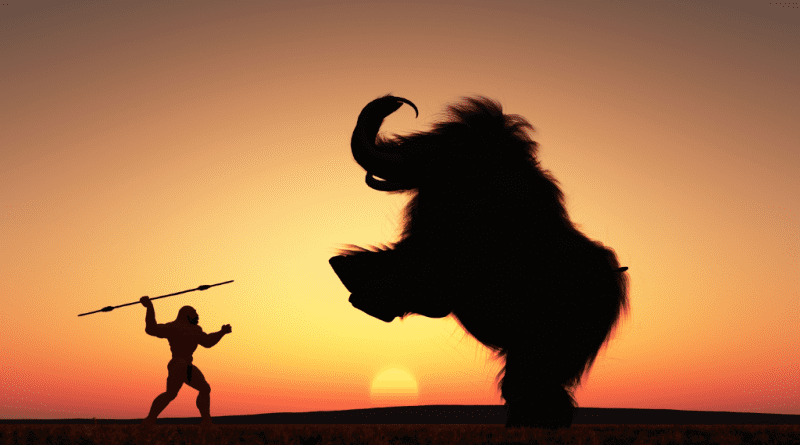What is Drive Theory: How It Drives Behavior and Motivation
Drive theory is a psychological concept that attempts to explain why and how people behave in the ways they do. It focuses on the idea of drives, which are urges or motivations that drive people to take action. There are three primary types of drives: biological, psychological, and social. In this blog post, we will discuss each type of drive and how it affects behavior and motivation. We will also explore the different theories related to drive theory and discuss how researchers have studied it over the years.
Drive Theory Background
The theory was created by behaviorist Clark Hull in 1943. Hull was a leading researcher in the field of drive theory and is credited with many of the key ideas related to the concept. In his work, Hull proposed that there are three primary drives that drive human behavior: the drive for food, the drive for sex, and the drive for social interaction. These drives, he argued, are what drive people to take action and engage in various behaviors.
Hull’s work was influential in the field of psychology and helped to lay the foundation for drive theory. However, it should be noted that drive theory has evolved over the years and there are now different versions of the theory that include a variety of different drives. Nevertheless, the basic premise of drive theory remains the same: that there are certain drives that drive human behavior.
Types of Drives
As we mentioned earlier, there are three primary types of drives: biological, psychological, and social. Let’s take a closer look at each type of drive.
Biological Drives
Biological drives are those that are related to our basic needs to survive and reproduce, such as the need for food, water, shelter, and sex. These drives are often referred to as “primary drives” because they are necessary for survival. When we are hungry, for example, our drive for food is activated and we will take action to get something to eat. Similarly, if we are thirsty, our drive for water will be activated and we will take action to get something to drink.
Psychological Drives
Psychological drives are those that are related to our psychological needs, such as the need for love, attention, and approval. These drives are often referred to as “secondary drives” because they are not necessary for survival. However, they are important for our psychological well-being. When we feel lonely, for example, our drive for social interaction will be activated and we will take action to find companionship. Similarly, if we feel like we are not receiving the love and attention we need, our drive for love will be activated and we will take action to seek out relationships.
Social Drives
Social drives are those that are related to our need for social interaction. These drives are often referred to as “tertiary drives” because they are not necessary for survival or psychological well-being. However, they are important for our social lives. When we feel the need to belong, for example, our drive for social interaction will be activated and we will take action to find friends and companionship. Similarly, if we feel the need to be accepted, our drive for social approval will be activated and we will take action to seek out relationships.
Theories Related to Drive Theory
There are a variety of different theories that are related to drive theory. These theories include:
– Incentive theory
– Arousal theory
– Motivation theory
– Emotion theory
Incentive Theory
Incentive theory is a theory that suggests that people are motivated to take action in order to receive a reward. This theory is based on the idea of operant conditioning, which is a type of learning that occurs as a consequence of the consequences of our actions. In operant conditioning, there are three primary types of reinforcement: positive reinforcement, negative reinforcement, and punishment.
Positive reinforcement is a type of reinforcement that rewards behavior. Doing so increases the likelihood of that behavior being repeated. For example, if you give a child a toy after they eat their dinner, you are using positive reinforcement to increase the likelihood that the child will eat their dinner in the future.
Negative reinforcement is a type of reinforcement that removes an unpleasant condition after the desired behavior is displayed. For example, if you take away a child’s toy after they eat their dinner, you are using negative reinforcement to increase the likelihood that the child will eat their dinner in the future.
Punishment is a type of reinforcement that involves bringing an unpleasant consequence after a behavior is displayed. For example, if you spank a child after they eat their dinner, you are using punishment to decrease the likelihood that the child will eat their dinner in the future.
Conclusion:
Drive theory is a theory that suggests that our behavior is motivated by the need to satisfy certain drives. These drives can be divided into three categories: physiological drives, psychological drives, and social drives. Incentive theory is a theory that is related to drive theory. It suggests that people are motivated to take action in order to receive a reward.
While drive theory is a relatively simple concept, it can have a profound impact on our understanding of human behavior. By understanding the drives that motivate us, we can better understand why we do the things we do. Additionally, by understanding drive theory, we can learn how to better inspire ourselves and others.
If you’re interested in learning more about drive theory, or if you want to learn how to better motivate yourself and others, Tony Robbins’ book “Unleash the Power Within” is a great resource. In this book, Robbins discusses the drive theory in detail. Then provides practical exercises that can help you apply drive theory to your own life.
What do you think about drive theory? Do you think it can help us better understand human behavior? Let us know in the comments below!
Get more daily on your newsfeed at the Undefeated Motivation FB page or Undefeated Motivation IG page.





Hi there, of course this paragraph is really good and I have learned lot of
things from it concerning blogging. thanks.
I went over this internet site and I believe you have a lot of excellent info, saved to fav (:.
Hello there! I could have sworn I’ve been to this site before but after browsing through a few of the posts I realized it’s new to me. Nonetheless, I’m certainly delighted I stumbled upon it and I’ll be bookmarking it and checking back frequently!